Ballylee Castle
Houses within 10km of this house
Displaying 33 houses.
Houses within 10km of Ballylee Castle
Displaying 33 houses.
| House name | Description | |
|---|---|---|
| Raheen | Raheen is associated with both the Kilkelly and O'Hara families. In the 1770s it seems to have been a residence of the Taylor family, with whom the O'Haras intermarried. In the 1830s the OS Name Books record it as "a neat house, in form like a cottage two stories high." Raheen House was badly damaged by fire in the latter part of the twentieth century. The entrance gateway is still extant. |

|
| Coole | Coole House was built in the late 18th century for Robert Gregory. It was demolished in 1941 but the gardens and some of the parkland are still extant and maintained by the Forestry and Wildlife Service. Part of the farm buildings now houses an interpretive centre and tea rooms. See www.coolepark.ie |

|
| Tullira | Lewis records Tillyra as the seat of J. Martyn. Tullira was originally a tower house which was modified at various times. The OS Name Books record it as a tower house with a modern house attached. The gardens included a hot house. In 1906 it was the property of Edward Martyn when the buildings were valued at £100. It is still extant and was the home of Lord and Lady Hemphill in the 20th century. It has had a number of owners since then and in 2013 was offered for sale. |

|
| Lough Cutra (Lough Cooter) | In 1814 Loughcooter was the residence of C. Vereker, MP while Lewis records it as the seat of Viscount Gort. In the 1850s it was owned by Viscount Gough and was valued at £80. In 1906 it was still in the possession of Lord Gough when the buildings were valued at £300. Lough Cutra is still extant and occupied. A restoration programme is underway since 2000 and the castle is now available as an event location. Some of the stable yard has been converted into holiday cottages. See www.loughcutra.com. |

|
| Prospect (Kiltartan) | Occupied by A. Nolan in 1814. Lewis records Prospect as the seat of Nolan in 1837. By the time of Griffith's Valuation it appears to have been part of the estate of the representatives of Vicesimus Knox and leased to William Mulville. The house is still extant and occupied. |
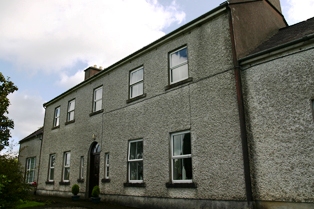
|
| Ashfield House | The house at Ashfield seems to have been known as Clooneene, particularly when it was the home of the Blake Forster family. In 1814 it was the home of Francis Blake Forster but by 1837 Lewis records it as in the ownership of D. McNevin. Earlier, in 1786, Wilson wrote that it was the seat of Mr. Forster. Ashfield House is demolished but substantial parts of the walled garden and the gate lodge are still extant. |

|
| Cloon | In 1814 Cloon House is recorded as the seat of B. Eyre. Lewis records the house as that of Burke Eyre in 1837. At the time of Griffith's Valuation Cloon House was occupied by Henry Lahiff when it was valued at £15. It is still extant and occupied by his descendents. |
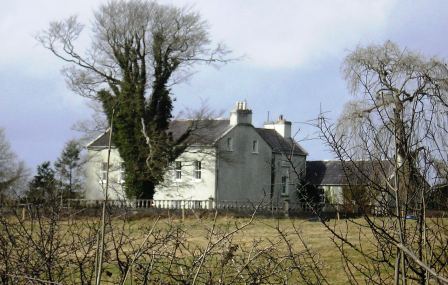
|
| Russaun (Russane) | Russaun, sometimes spelt Russane, appears to have become part of the Gregory estate, though occupied by the Bagot family, by the mid-19th century. At the time of Griffith's Valuation it was leased by William Gregory to John Bagot. However, in 1837 it was recorded by Lewis as the residence of the Lahiffe family. It is still extant and occupied. |

|
| Ballyturin | At the time of Griffith's Valuation Ballyturin House was the residence of John Bagot. In 1906 John C. Bagot was the owner of the house which was valued at £17. It was located in a commanding position overlooking rolling countryside. In May 1921, an RIC man (District/Inspector Cecil Blake), his wife and two British Army officers (Capt Cornwallis and Lt McCreery) were killed in an ambush by South Galway/East Clare Irish Volunteers at the gates of Ballyturin House. Margaret, Mrs Robert Gregory of Coole Park (Lady Gregory's daughter-in-law) escaped without injury. Ballyturin is now a ruin. |
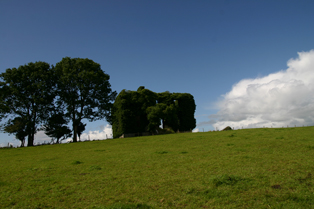
|
| River View | River View was recorded as a seat of the Lopdell family by Lewis in 1837. By the time of Griffith's Valuation it was owned by the representatives of Vicisimus Knox and was being leased by the Vereker estate when it was valued at £5. It is now in ruins. | |
| Rosemeade/Lisheen | At the time of Griffith's Valuation this property was leased by Matthew Rosengrave to Patrick Carrick and valued at £21. It was accompanied by over 200 acres. In 1814 Lisheen was the seat of Jer. Rosingrave. The house is labelled on both the first and 25-inch editions of the Ordnance Survey map as Rosemeade but today is known as Lisheen. It is still extant and occupied as a farm house. |

|
| Castle Taylor/Ballymagrath | The house at Castle Taylor, originally known as Ballymacrath, was built adjacent to a tower house. The Taylor family had been settled there since the 17th century. In 1837 Lewis recorded it as the seat of Gen. Sir. J. Taylor. In 1894 and 1906 it was the residence of Walter Shawe Taylor and was valued at £50. It is now in ruins. |
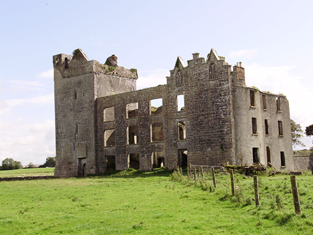
|
| Ballymantan/Ballynamantan | At the time of Griffith's Valuation Ballynamantan was leased by Edward J. Hunt to Francis J. Davys. It was then valued at £15. Lewis records the house as the seat of Lombard Hunt. An occupied house still exists at the site though it is not the original. |

|
| Northampton | The townland of Poulnaveigh otherwise Northampton, containing Northampton House, "of modern construction", was offered for sale in the Encumbered estates court in June, 1865. In 1894 Slater refers to Northampton as the residence of Captain Harry de Vere Pery a son of the second Earl of Limerick. In 1906 it was the property of James Brady-Murray and was valued at £31. Northampton House is no longer extant having been demolished in the 1930s. http://www.northamptonns.com/index.php/eng/content/view/full/131 |

|
| Cregaclare | The Ordnance Survey Name Books mention that Cregaclare House was built in 1802. In the 1830s it is described as having elegant gardens and a Hot House producing various types of fruit. Cregaclare House is recorded by Lewis as the seat of J.S. Lambert in 1837. At the time of Griffith's Valuation it was leased by James Lambert to Lord Clanmorris and was valued at £50. Bought by Lord Clanmorris in the late 1850s, it was still his property in 1894 and 1906. Only the ruins of a basement and remains of stable yard and gateways are visible. Mausoleum located at M470118 in the ruins of old RC church. This was originally a burial place for the Bingham family (Lords Clanmorris) but those buried there were later re-interred in the grounds of the Church of Ireland, Ardrahan. |
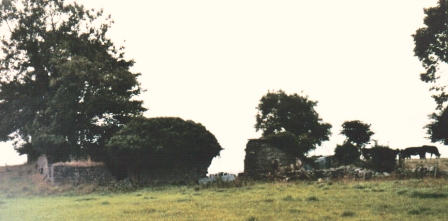
|
| Roxborough | In 1786 Wilson refers to Roxborough as the seat o Mr. Persse. At the time of Griffith's Valuation it was the seat of Dudley Persse and valued at £70. The house at Roxborough is most famous as the birthplace of Isabella Augusta Persse, later Lady Gregory of Coole. Roxborough is now a ruin, having been burnt in 1922. The impressive front entrance gates (M541136) are still extant. A steward's house house, close to Roxborough, is located at M534128. This is still extant and occupied. |

|
| Monksfield | The house at Monksfield had originally belonged to the Morgan family who were of Welsh origin. Evidence from the 17th century records shows that they acquired land in this area in the later 17th century. In 1837 Lewis recorded Monksfield as the seat of Capt. Morgan. It had to be sold in the mid-19th century due to debts. By the 1850s it was the residence of Thomas Shawe-Taylor.In 1906 it was owned by Walter Shawe Taylor and was valued at £14. Kelly, writing in 1976, indicated that the estate was sold to the tenants around 1908. After the estate was divided, the house continued to be occupied well into the twentieth century but is now a ruin surrounded by farmland. |
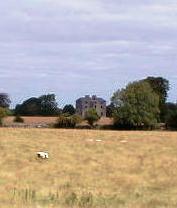
|
| Limepark | In 1855 the house at Limepark north, parish of Kilthomas, barony of Dunkellin, was in the possession of George Persse. Earlier in the 19th century the house was occupied by Thomas Wilton. This property was recorded as the seat of the Wallace family by Lewis in 1837. During the 1916 Rising it afforded shelter to the rebels from Galway. It is now a ruin. The farm of which it is a part was offered for sale in 2024. |
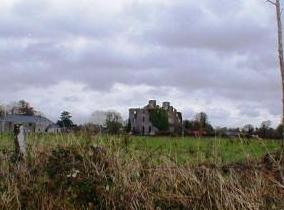
|
| Newpark | The Ordnance Survey Name books state that the townland was the property of John Nolan of Prospect, Gort in the 1830s. The house appears to have been built after that time. At the time of Griffith's Valuation, this property was leased by John Nolan to Andrew Nolan. In 1906 it was still the property of Andrew Nolan and was valued at £17. It is no longer extant. | |
| Castledaly | This property was in the possession of the Blake family from the late 16th century and was known as Corbally. In 1786 Wilson refers to the house as the seat of Mr. Blake. When Peter Daly acquired it in 1829 he had the castle remodelled and a facade added. The property then became known as Castledaly. Lewis records it as the seat of J. Daly in 1837. At the time of Griffith's Valuation it was the property of James Daly and the buildings were valued at £34. It was also the seat of James Daly in 1894. It is now a ruin. The mausoleum of the Daly family can be seen in the grounds of St. Theresa's church nearby, which they helped to build and where memorial tablets recording members of the family can be seen. |
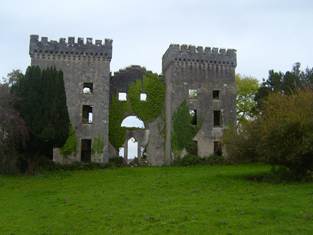
|
| Cappard | Lewis mentions Cappard as being the seat of the Mahon family in 1837. At the time of Griffith's Valuation it was occupied by James Galbraith and was valued at £40. by 1906 it was owned by Richard Galbraith and was valued at almost £54. Cappard House is no longer extant but the remains of an extensive stable block (M514067) are still visible. |

|
| Castleboy | In 1855 Dudley Persse owned a house valued at £40 in Castleboy. Lewis also recorded it as a seat of the Persse family in 1837. One round tower and small portions of the stable yard now remain. |

|
| Lavally (Kiltartan) | At the time of Griffith's Valuation, the representatives of Vicesimus Knox were leasing property valued at £47, including a mill,to John Langan, at Lavally, barony of Kiltartan. This building is no longer extant. | |
| Lisbrine House | At the time of Griffith's Valuation, Lisbrine was the residence of Richard Burke and was valued at £12. By 1906 it was owned by John Burke and was valued at £11 while a smaller house, valued at £6, was owned by Myles Burke. Lisbrine House is no longer extant. | |
| Rindifin Cottage | In 1786 Wilson refers to Rhyndifen as the seat of Prendergast Smyth. Lewis records Rhyndifin as the seat of the Blaquiere family in 1837. It was occupied by Mary Moloney at the time of Griffith's Valuaiton, leasing from the Knox estate and was valued at £4. The entrance gateway is extant and a house still occupies the original site. |

|
| Annagh Cottage (Kiltartan) | In 1786 Wilson refers to Annagh as the seat of Mr. Burke. Redmond Burke is recorded as residing at Annagh in 1814. The house at Annagh, barony of Kiltartan, was occupied by Redmond Burke at the time of Griffith's Valuation, when it was valued at £10. Redmond Burke of Annagh, sold property in the Land Judges' Court in 1882. Annagh Cottage does not appear on the 25-inch Ordnance Survey map of the 1890s and no trace remains of it now. | |
| Forthill Cottage | Lewis records a Burke family resident at Forthill in the parish of Kilbeacanty in 1837. By the time of Griffith's Valuation the holding was being leased by Michael Diviney from William Gregory. The house was valued at £2 but was vacant at that time. It is no longer extant. | |
| Lydacan Lodge | Lydacan Lodge is recorded in the OS Name Books as the residence of John O'Hara. On the 1st edition OS maps the house is recorded as Lydacan Lodge. At the time of Griffith's Valuation Lydacan is recorded as the property of James O'Hara where he held a herd's house and 200 acres. | |
| Maryville House | At the time of Griffith's Valuation, Arthur Alexander occupied Maryville House at Cahermore, barony of Kiltartan, when it was valued at £8. Maryville Police Barracks was located nearby. The original Maryville House has disappeared and the house on the site of the barracks is known as Maryville House. |
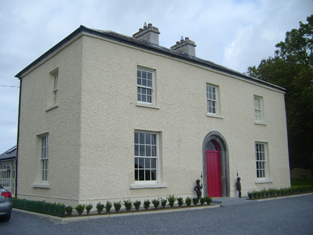
|
| Derrykeel | Derrykeel was the property of the Barry family in the nineteenth century. At the time of Griffith's Valuation it was the property of Smith Barry. There was a house on the property valued at 10s as well as 500 acres. | |
| Chevy Chase Cottage. | William Arthur Persse was the owner of a house valued at almost £10 at Laherdaun in 1906. It had been the property of Dudley Persse at the time of Griffith's Valuation. It was probably used mainly as a hunting lodge due to its remote location. Ruinous fragments remain, surrounded by state forestry. |
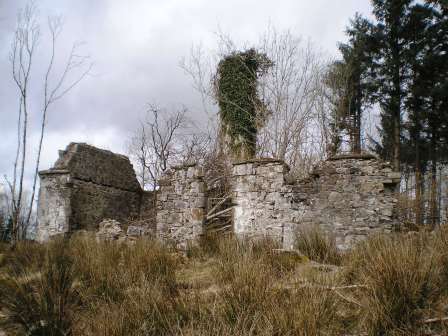
|
| Drumharsna | At the time of Griffith's Valuation, Lord Ashtown owned the townlands of Drumharsna North and South, barony of Dunkellin. A herd's house in Drumharsna South was valued at £2. By 1906 the buildings at this property were valued at £14. These buildings are no longer extant. | |
| Garryland | Garryland was an extensive wooded area, part of the Shawe-Taylor estate in the parish of Kilmacduagh, barony of Kiltartan. At the time of Griffith's Valuation and also in 1906 buildings to the value of £10, including a wood-ranger's house, were located here. These buildings are now in ruins but substantial areas of woodland remain and are now maintained by the Forestry and Wildlife Service. |

